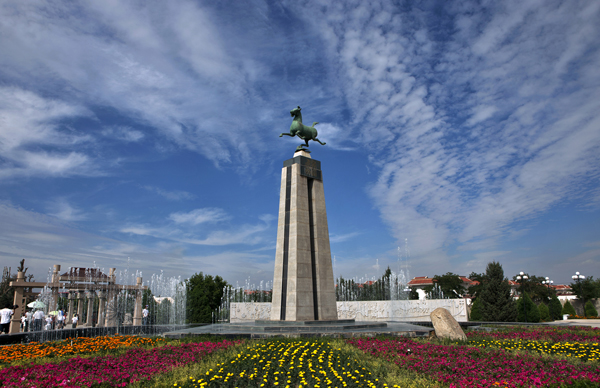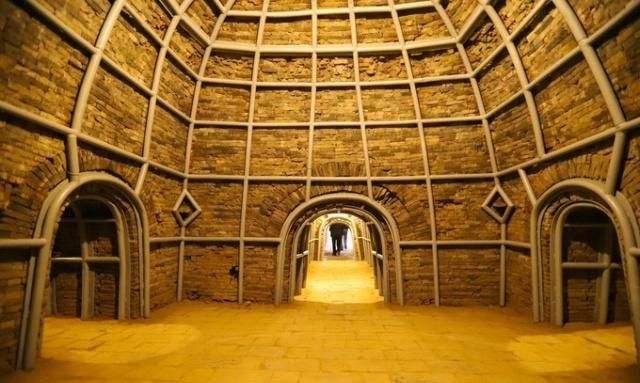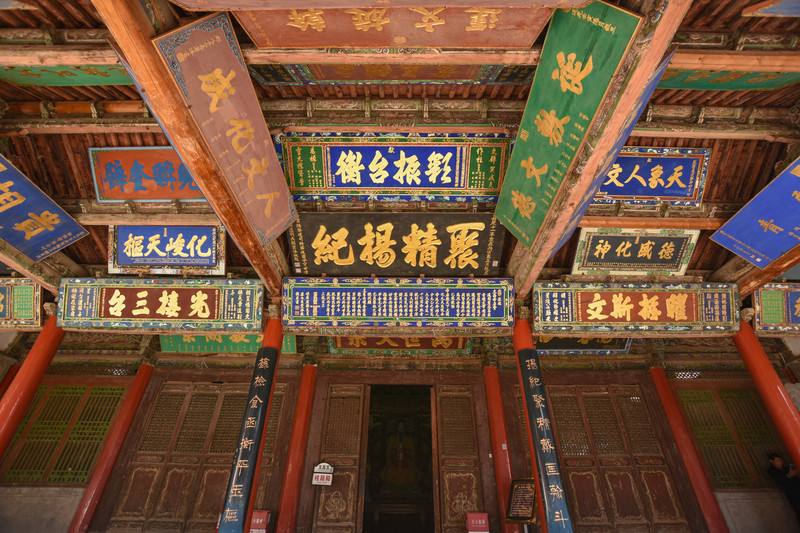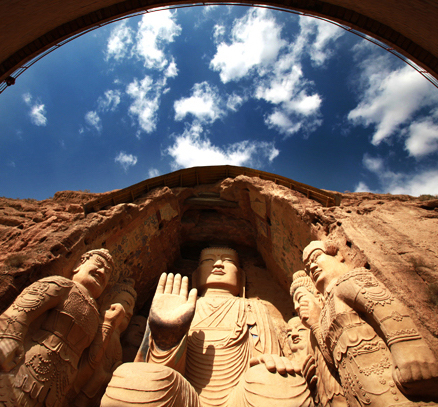
The city of Wuwei is located within a historic pathway known as the Hexi Corridor, which is flanked by the towering Tibetan Plateau in the north and the inhospitable Gobi Desert to the south. The dangerous and impenetrable nature of the surroundings meant that travellers along the Silk Road were forced to exclusively use this route, as it was the only safe way to enter central China from western China. Thus, as an ancient oasis city, Wuwei had something of a captive audience! In particular, Wuwei sits at the centre of the three provincial capitals of Lanzhou, Xining, and Yinchuan, meaning it remains a nexus for trade and travel in western China.
Archaeological evidence suggests that the Wuwei area was inhabited by primitive people over 4,000 years ago, during the Neolithic Era, although the first settlement did not appear there until around 2,100 years ago. This settlement was a town known as Zang and was occupied by a nomadic tribe called the Xiongnu, who ruled the region during this period. The city was not formally established, however, until the Han Dynasty (206 BC-220 AD), when Emperor Wu sent a military general named Huo Quobing to attack the Hexi Corridor in 121 BC. After General Huo’s forces had successfully defeated the Xiongnu and captured the territory within the Hexi Corridor, Emperor Wu renamed Zang to Wuwei in honour of General Huo’s heroism, as the name “Wuwei” (武威) literally translates to mean “Martial Prestige.”
Throughout its history, it served as the capital for a number of smaller dynasties, such as the Former Liang (317-376 AD), the Later Liang (386-403 AD), the Southern Liang (397-414 AD), and the Northern Liang (401-439 AD). In fact, many of these dynasties derived their name from the alternative name given to Wuwei during the Han Dynasty, which was “Liangzhou” (凉州) or “Cold Prefecture.” For a brief period, it even served as the provisional capital for the Western Xia Dynasty (1038–1227), which was led by a mysterious ethnic group known as the Tangut people. To this day, very little is known about the Tangut people and the relics that have been unearthed near Wuwei have been integral to our understanding of this enigmatic culture.
Nowadays, the city of Wuwei is unsurprisingly renowned for its wide variety of historical attractions, from imperial tombs to elaborate Buddhist grottoes. Arguably its greatest claim to fame is the Leitai Han Tomb, where a bronze statue known as “Matafeiyan” or “Horse Galloping, Flying Swallow” was found. The tomb dates back to the Eastern Han Dynasty (25 BC-220 AD) and belonged to General Zhang of Zhangye, who had once been responsible for maintaining imperial defences on the western frontier and was buried sometime between 186 BC and 219 BC.
The tomb itself wasn’t discovered until 1969, when a group of local people were tasked with digging air-raid shelters near the city of Wuwei. They came upon the tomb by accident and alerted the local authorities to their discovery not long thereafter. Once the tomb had been properly excavated, archaeologists unearthed a chamber that contained over 200 valuable bronzes, including the famed statue of the horse with its foot planted delicately on the back of a flying swallow. This statue has become somewhat iconic throughout Gansu province and is currently housed within the Gansu Provincial Museum, which is in the city of Lanzhou.

The Leitai Han Tomb, however, has been opened as a tourist attraction and can be found within the peaceful expanse of Leitai Park. While it may no longer be home to the coveted bronze horse, the tomb now serves as a sprawling underground museum, which is comprised of three main chambers and six smaller annexes. There are over 200 artefacts currently on display within the tomb, including a variety of elegant gold, silver, copper, iron, and jade wares, along with a series of 99 ceremonial figurines that were buried with General Zhang. The name “Leitai” literally translates to mean “Thunder Platform” and, as grandiose as this name sounds, it simply refers to the fact that the platform atop the tomb was once a sacrificial altar for the God of Thunder in ancient times. There is even a Taoist temple on-site that is dedicated to the Thunder God, which dates back to the Ming Dynasty (1368-1644) and is also open to visitors.

Alongside the Leitai Han Tomb, visitors to Wuwei can also pay a visit to one of the many wonderful temples dotted throughout the city. In particular, the Wuwei Confucian Temple, also known simply as the Wenmiao Temple, has been an integral site for worship and education in the city for centuries. It was originally constructed during the Ming Dynasty and is famed for its stele courtyard, where famous stone steles can be found nestled within lush green pines. Amongst these steles, the most highly prized is the Western Xia Tablet, which dates back to the Western Xia Dynasty and is one of very few such steles still in existence. Within the temple, you will also find the Wuwei Museum, which houses a vast collection of over 36,000 books, paintings, inscriptions and other cultural relics.
Lovers of nature will want to gravitate towards the east of the city, where the Wuwei Desert Park can be found. This lush expanse of greenery, inlaid like an emerald within the Tengger Desert, is the largest desert park in China and was originally established in 1986. It is designed primarily to showcase the natural beauty of the desert, grasslands, and gardens. The north of the park is connected to the Endangered Wild Animals Research Centre, while Changcheng or “Great Wall” Town can be found on its eastern border.
If you’re already feeling intoxicated by thoughts of Wuwei, that may be by design! According to historical records, people in Wuwei began growing grapes and making wine over 2,000 years ago. In fact, it is often described as “the hometown of Chinese wine” for this reason. Thanks to its continental climate and long hours of sunshine, the countryside surrounding Wuwei is the ideal place to plant grapes and has earned Wuwei the nickname of “China’s Bordeaux.”

Wuwei also serves as the perfect stopover on the way to visit the Tiantishan Grottoes, which rank as one of the main Buddhist sites along the Silk Road. This Buddhist grotto complex has been etched directly into the snow-capped Tiantishan Mountains and was first excavated during the Northern Liang Dynasty, although they were added to right up until the Qing Dynasty (1644-1911). Its most notable feature is undoubtedly the 15-metre (49 ft.) tall statue of Shakyamuni Buddha that sits within the largest cave of the complex. To put that into perspective, this statue is nearly three times the size of a fully grown giraffe!
The Dayun Temple or (Great Cloud) Temple is widely considered to be the oldest Buddhist temple in the city of Wuwei. Although the exact date remains a mystery, the temple was originally founded during the Eastery Jin Dynasty (317–420).
Make your dream trip to Wuwei come true on our travel:
Explore the Silk Road in China – Exclusive Itinerary for December 2020